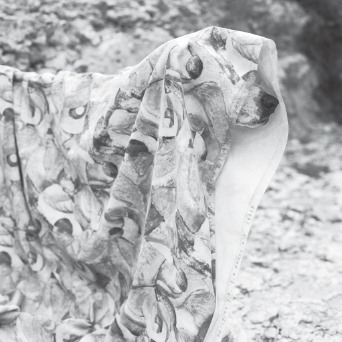
I hope your reaction to this issue of the Visual Communication Quarterly is like a dream—atypical and familiar.
These are surreal times. In addition to political surprises, fake news, and general malfeasance, 2016 began a year's celebration of the 100th anniversary of the DADA movement. An international, visual, and political movement, DADA brought us freedom of expression in the form of the absurd. This anti-art rebellion generated the poetry of mumbling, the aesthetics of everything, a typographic revolution, and eventually the birth of ideas over objects in the form of collage, photomontage, and the readymade.
Looking back at the work of the DADAists, they were a varied group—performers, poets, editors, and visual artists of various disciplines. All of them needed an audience while most needed active participants to fulfill or activate their projects. With this participatory requirement in mind, it would not make sense for a special issue of the 100 Years of DADA to have its own issue. Ironically, this tribute needs to be in the context of the normative. Therefore, I present a regular issue of the VCQ that bookends an homage to the art movement.
First, I selected a Portfolio that could bridge both the normative issue and the special sub-issue. Susi Brister's contemporary photographs fit not just in form and context, but coincidentally, this issue has a strong photography current. Brister creates visual distortions that challenge nature and question the work by people that surprise the viewer. Her work would have made Hannah Höch smile.
Supporting this bookending issue are two important research articles. The first, Annabelle Cathryn Wilmott's “The Politics of Photography: Visual Depictions of Syrian Refugees in U.K. Online Media,” uses content analysis to show that “depictions of refugees do not change drastically by the newspaper's ideology, indicating that the image of the refugee has become mainstreamed” (p. 78). In “News Photographers and Interference: Iconophobia, Iconoclasm, and Extramedia Influences on the Ground,” Rachel Somerstein discusses “the passerby effect” on photojournalists. Somerstein conducted semi-structured interviews with photojournalists to create a taxonomy of the sources of interference, “in which others…seek to block, and occlude the photographers from taking pictures because they wish to ‘protect’ subjects or because they believe that taking photographs in public spaces is illegal. The study also showed the widespread influence that iconophobia plays for photographers in the field and how subjects and passersby sometimes transform that passive anxiety into active attempts to block a photographer from doing her job” (p. 124). While the first article in the journal sheds a light on how refugees are portrayed in news media, the last article brings awareness to effects on photojournalists. The VCQ is concerned with what media is produced, how it is produced, and everything in between, including art, poetry, and the retro-avant-garde.
